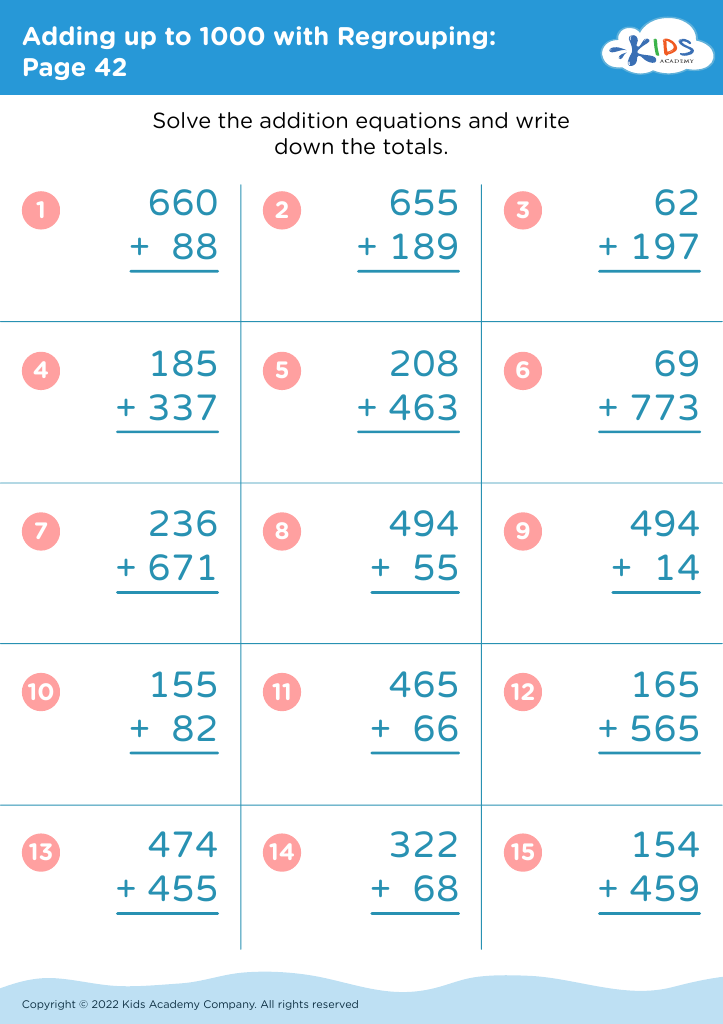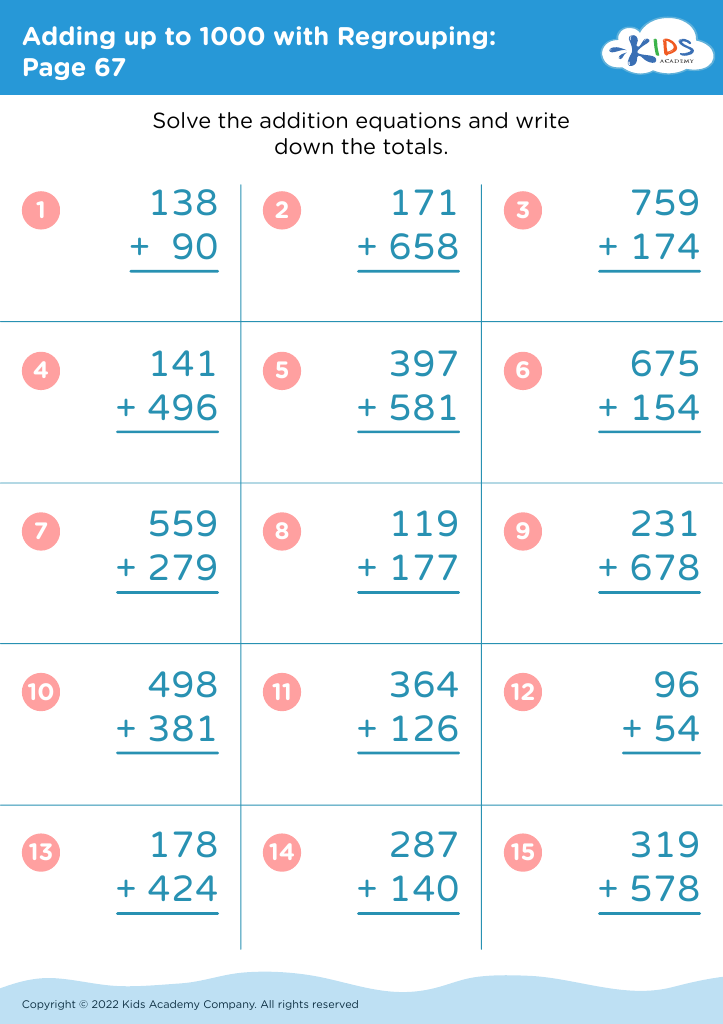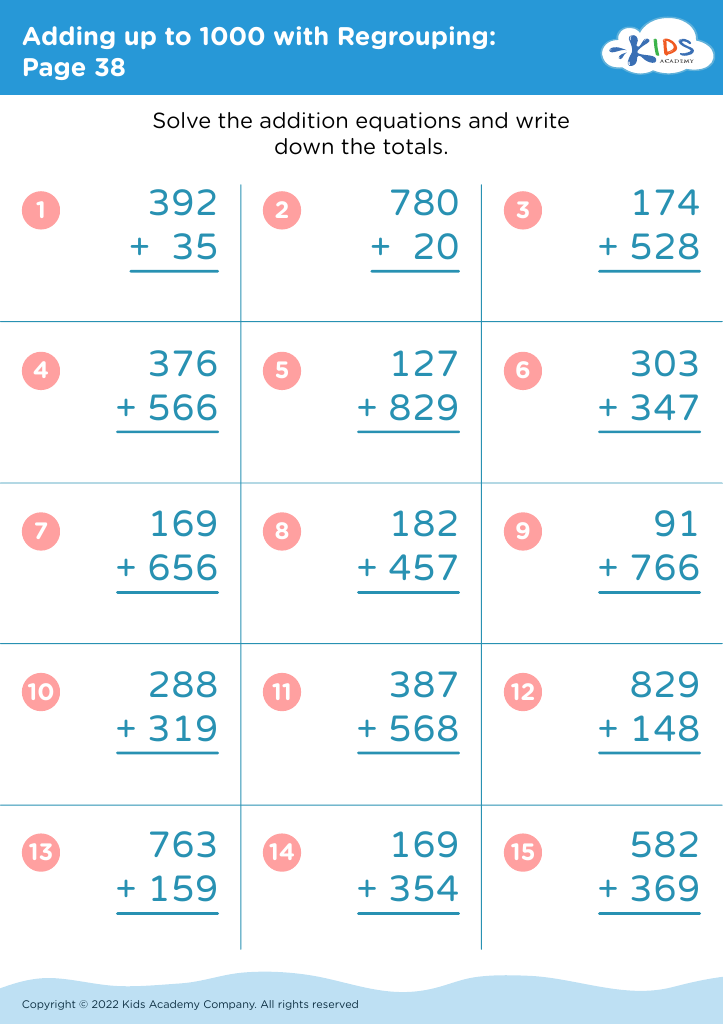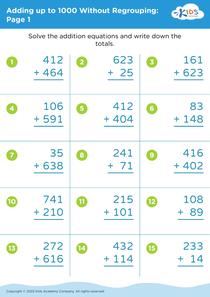Recognizing shapes Adding up to 1000 with Regrouping Worksheets for Ages 6-7
4 filtered results
-
From - To
Explore our exciting "Recognizing Shapes and Adding up to 1000 with Regrouping Worksheets" designed specifically for ages 6-7! These engaging worksheets combine math and geometry, helping young learners master addition while recognizing various shapes. Children will develop their ability to add numbers up to 1000, practice regrouping, and enhance spatial awareness through colorful illustrations and fun activities. Ideal for classroom or home use, our resources foster essential math skills, boost confidence, and promote critical thinking. Easy to download and print, these worksheets are perfect for enhancing your child's learning experience and ensuring a solid foundation in early mathematics. Start learning today!
Recognizing shapes and masterly adding up to 1000 with regrouping are essential skills for children aged 6-7, forming the foundation for their future mathematical understanding. Understanding shapes helps young learners develop spatial awareness and enhance their problem-solving abilities. Recognizing different shapes fosters creativity and critical thinking, as children can apply these skills in real-world scenarios, such as art and architecture.
On the other hand, mastering addition with regrouping lays the groundwork for more complex mathematical concepts, such as subtraction, multiplication, and division. This skill helps children understand the place value system, building their confidence in tackling larger numbers. As they learn to group and regroup digits, children improve their cognitive flexibility and analytical reasoning. Practical applications abound; for example, kids can incorporate these skills when managing money, measuring, or even during everyday activities like cooking.
Lastly, equipping children with these fundamental skills prepares them for academic success and fosters a love for learning. By prioritizing shape recognition and addition with regrouping, parents and teachers actively contribute to a solid educational foundation that supports lifelong skills in math and problem-solving, encouraging children to overcome challenges and think critically.














